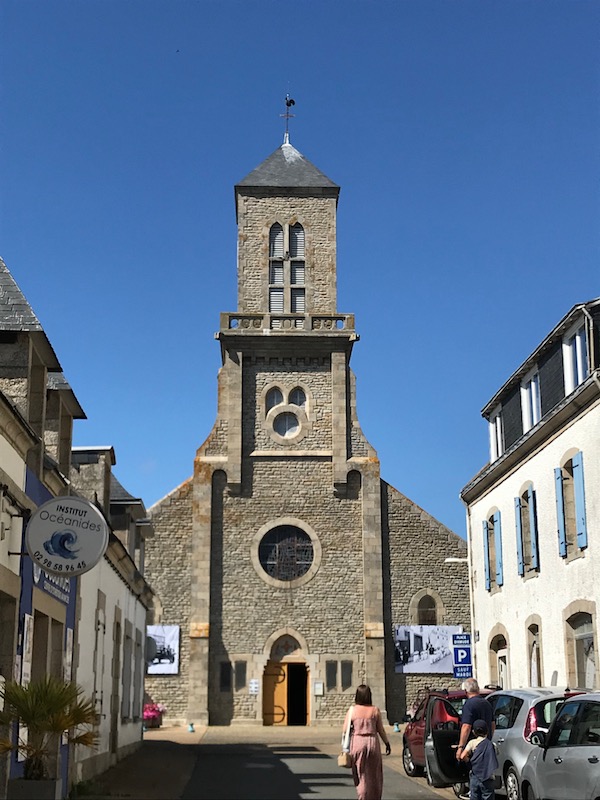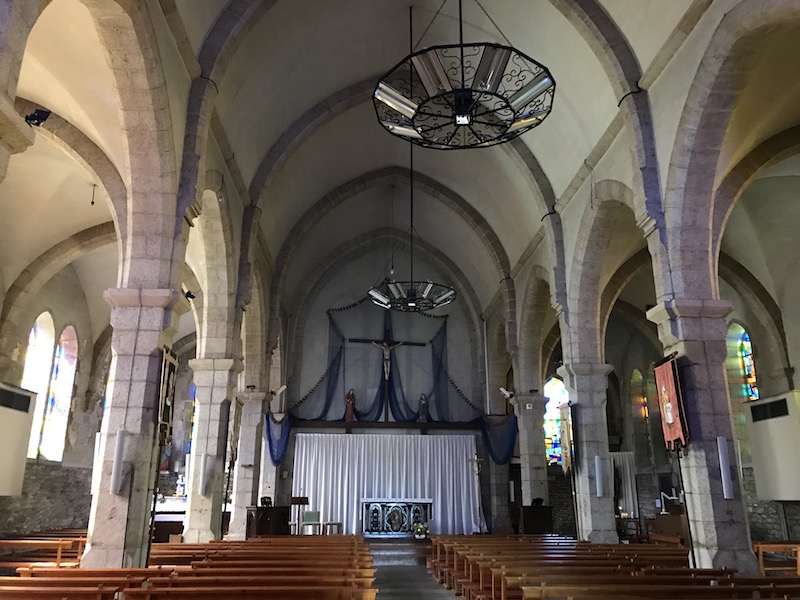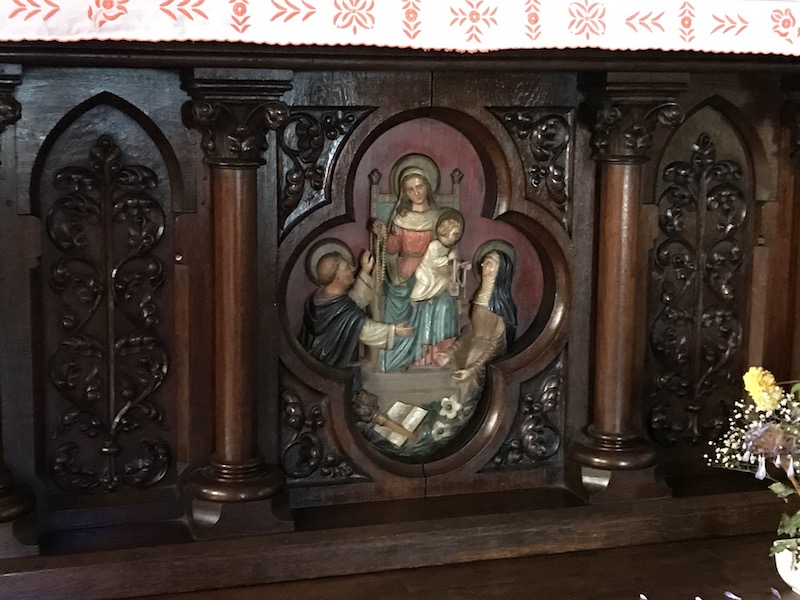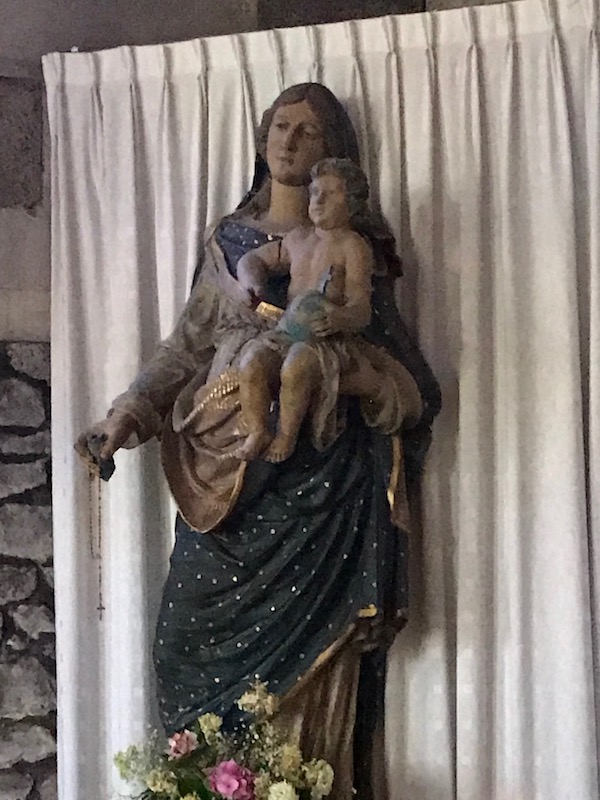Our Blog - Bretagne Trip - Summer 2021 - Guilvinec, France
We had met up with a local at a bar (we were getting coffee) in a little town and he was talking to us about various places to see, as he seemed quite proud of his area. He mentioned the town of Guilvinec, so we decided to head over there on our last day in Finistère before heading South. Guilvinec is located at the southwestern tip of Brittany in a region called Bigouden. We had already been to a few towns in this "cultural" region, particularly known for the high headdress traditionally worn by the ladies here up until the middle of the 20th century. I call it a "cultural" region because it is not a recognized region or department from an administrative point of view in France. It is an area that is distinguished from its neighbors by its traditions: costume, dances, songs, music, speaking, economy, beliefs, customs, everyday life, architecture, and gastronomy.
So, let's get down to Guilvinec. Sometimes I think it is interesting to look at how the town name has changed. It was written as "Ker Maenek" in 1383, perhaps from the Breton words ker (village) and maenek (stony). It changed throughout the years to Guilvinec, although there is some amount of confusion on whether it is Guilvinec (the official name) or Le Guilvinec (used on the signs at the entrance of the town and the town hall's website address).
There is geological evidence of prehistoric men living here, as the estuary made an attractive natural shelter. There are also several menhir's (large standing stones) and dolmens (prehistoric megalithic constructions normally with several vertical stones holding up a large horizontal stone, somewhat looking like a table). There hasn't been much in the way of "important" history in the town .... it continued to be a small fishing village, with several dozen thatched-roof cottages. It seems like there wasn't even a church built until 1892. By 1900, there were close to 4,000 people living here, mostly fishermen and people working in factories that conserved fish (mainly sardines). Then in 1901, the sardines seemed to become scarce in Brittany and many of the factories closed down. This scarcity of sardines lasted for 10 years. The population has been declining ... from a high of 5,000 in 1962 to under 2,700 in 2018.
Guilvinec is an important fishing port and you can see some of the smaller boats here. We saw a few boats that had just come into port and offloaded their fish, then made their way down to where they would remain docked until tomorrow. There were also a few boats in dry-dock and we never knew that there was that much boat under the water!

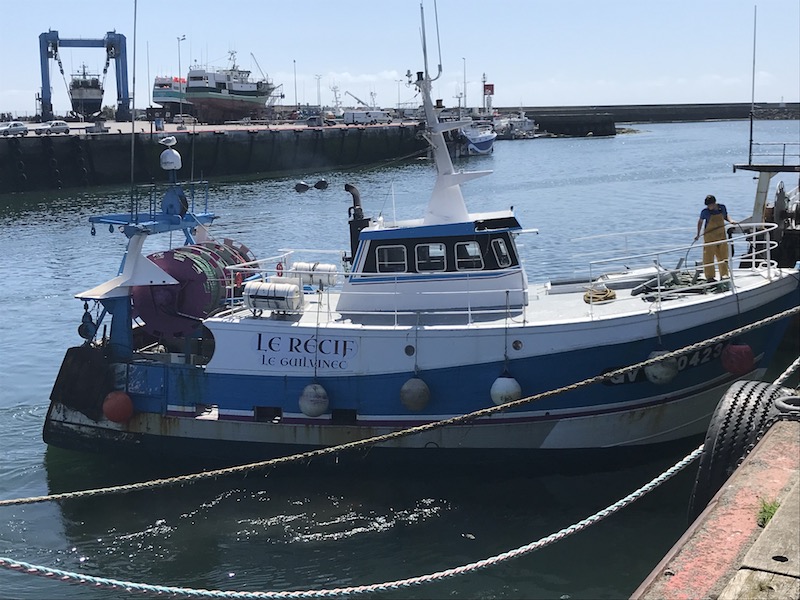
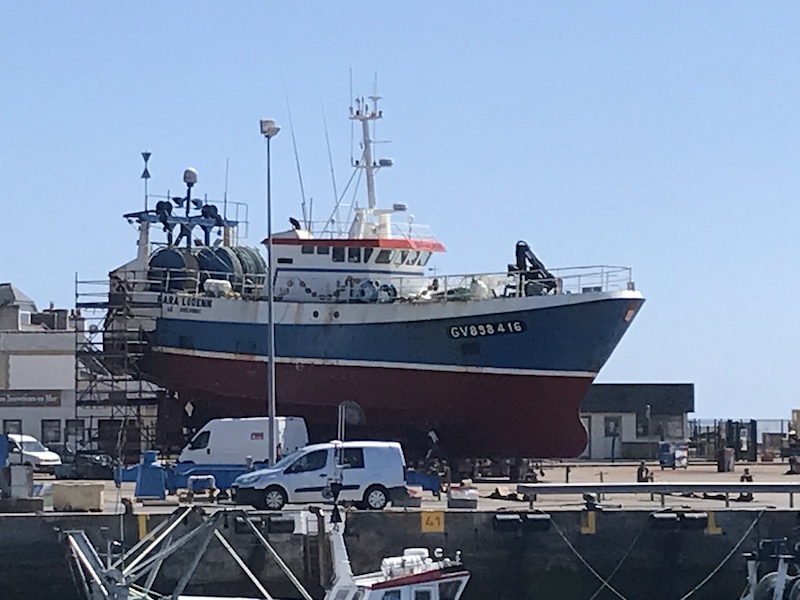
A bit of a view of the open water and the breakwater and the rocks that are along the shore.

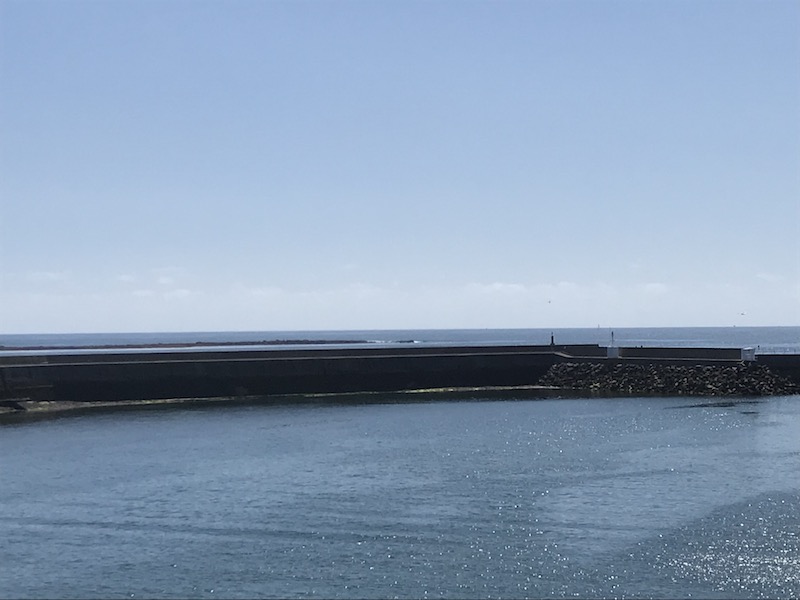

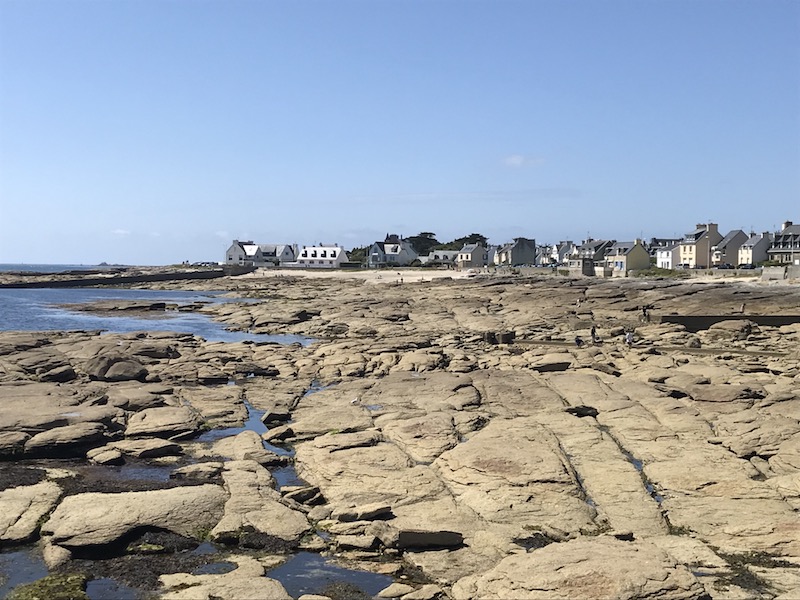

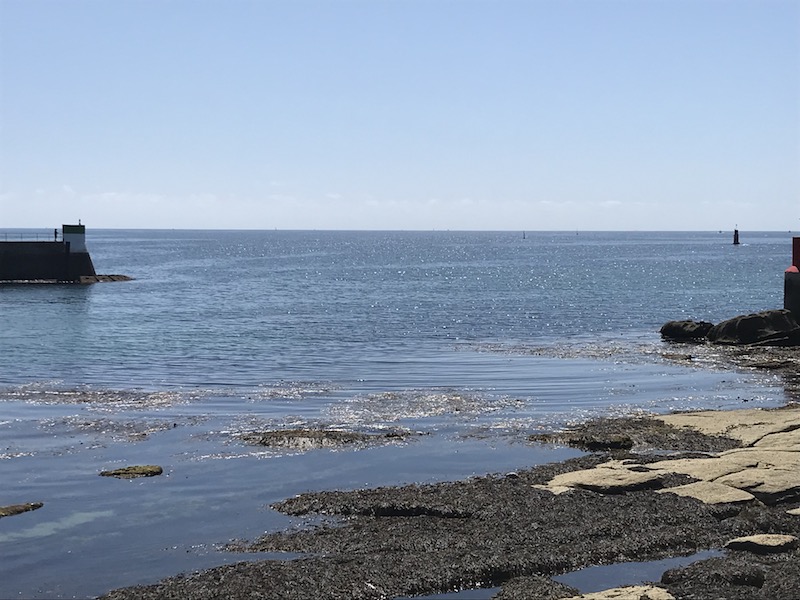
Here is what we really came to see. The local at the bar told us to get there around 4pm and watch the boats offloading their fish at the port. We could get a fairy good view, actually! First was a pretty good haul of shrimp.
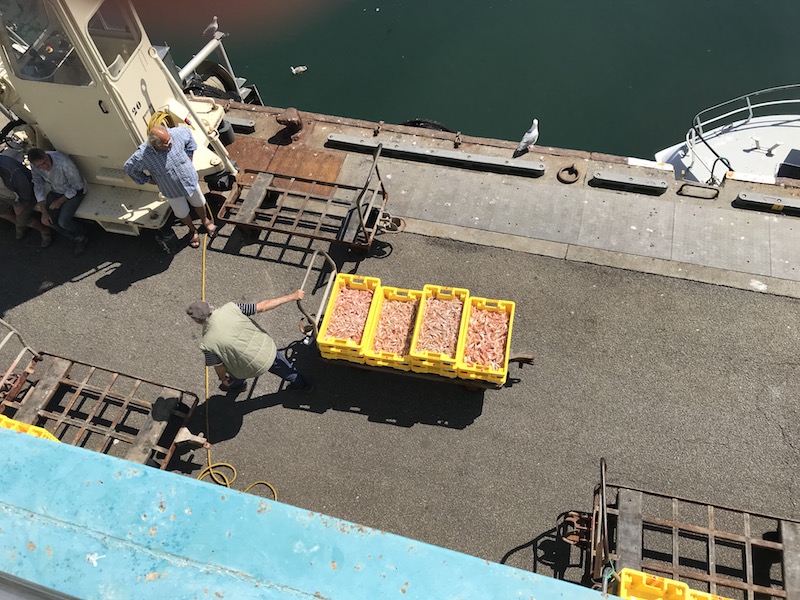
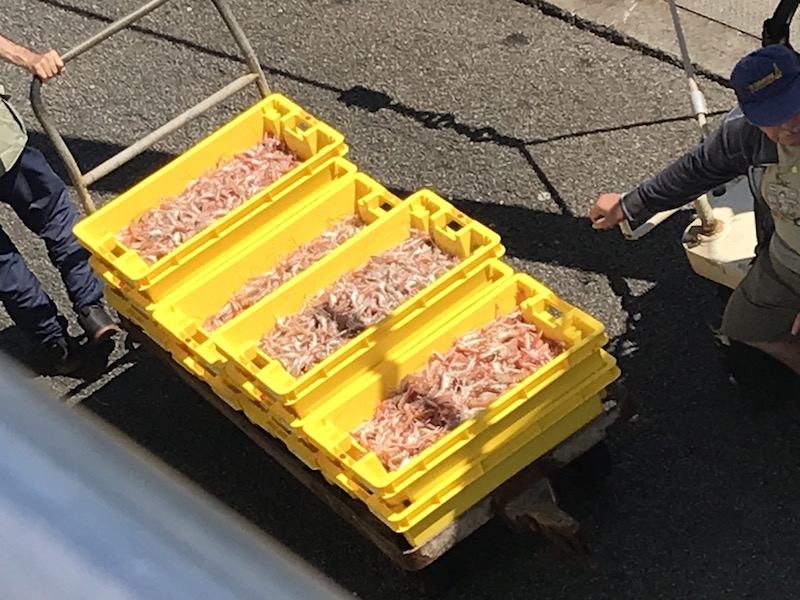
Then I took a couple pictures of a boat offloading .... as you will see, different boats offload differently. In these pictures, you'll see the yellow bins of fish and a guy who hands it off to another guy at the front of the boat who then hands it to someone off the boat who stacks it on a cart. This is method #1.


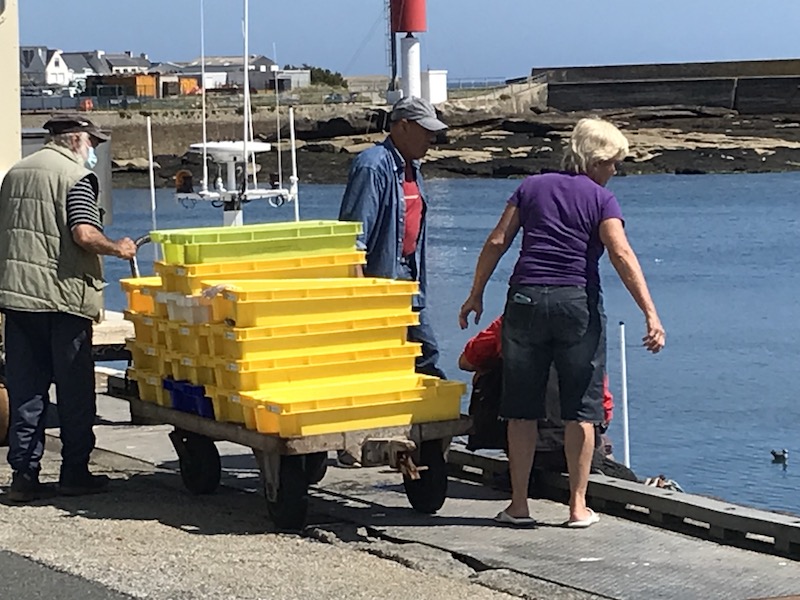
The fishing boat coming in with Lucy licking her lips ... perhaps she thinks she is going to get some of the fish!

So here is one fishing boat that came in, and I have a video showing the offloading using method #2. This one I thought was funny ... notice that the guy on the boat is handing the yellow bin to someone who is literally standing on one of the tires hanging down the side of the wharf, who then hands it up to the top.
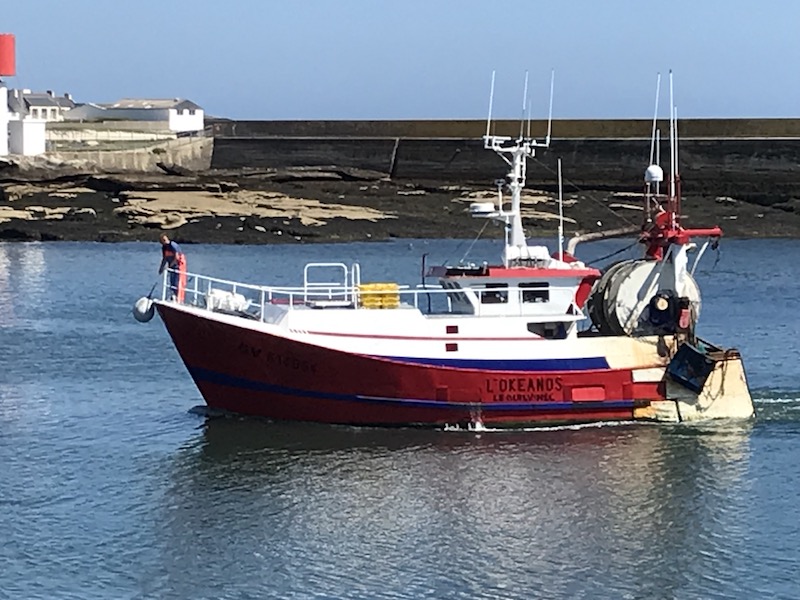
Now method #3, a winch is used to pick up a whole bunch of yellow bins together.
If you have some time to spend, you can visit the The center "Haliotika, the city of fishing", which allows you to discover seafood, the daily life of fishermen, the evolution of their profession and that of the port of Guilvinec.
Now, the church ... as you can tell from the style, it is a fairly recent church, dating back to 1892. At that time, it was only a rectangular building, no transept, apse, or bell tower. Those were added between 1960 and 1993. The current stained-glass windows, which are just color-blocked, were installed in the 1960's. There are some older statues, including a 17th century Christ on the Cross and statues of the Virgin (17th century) and Saint John (16th century).
